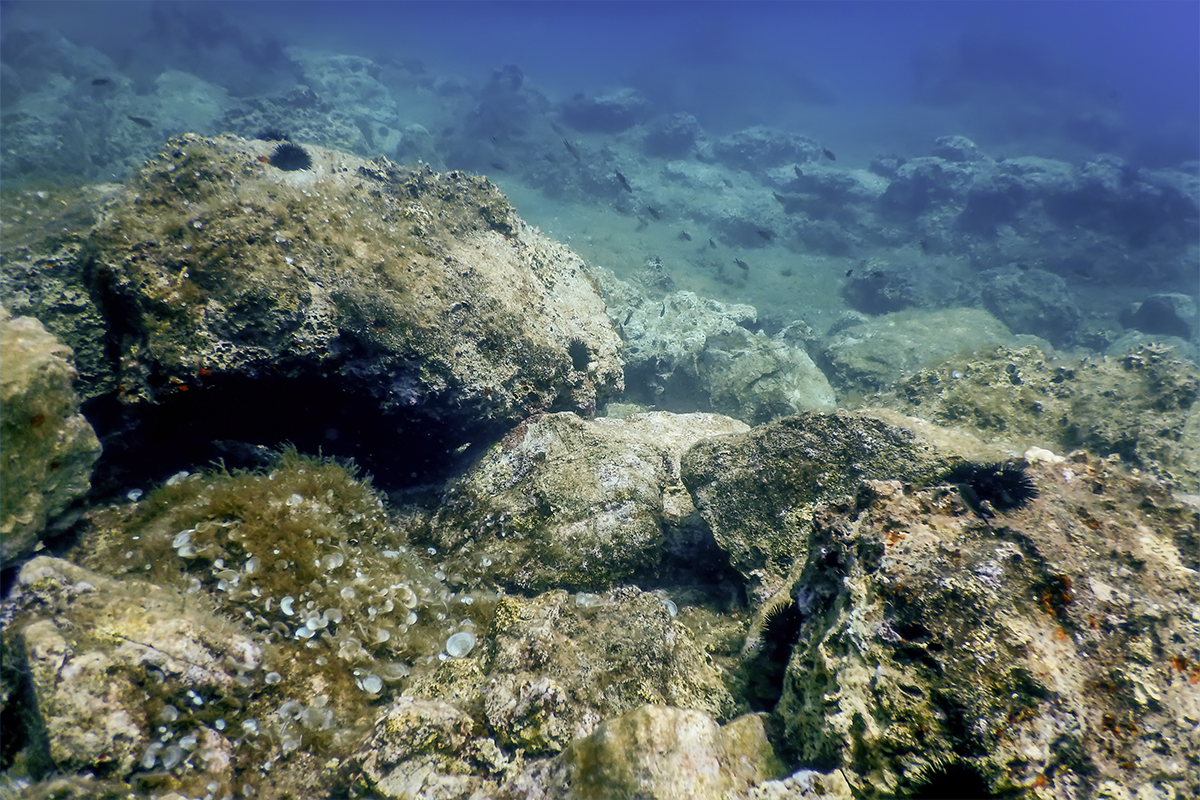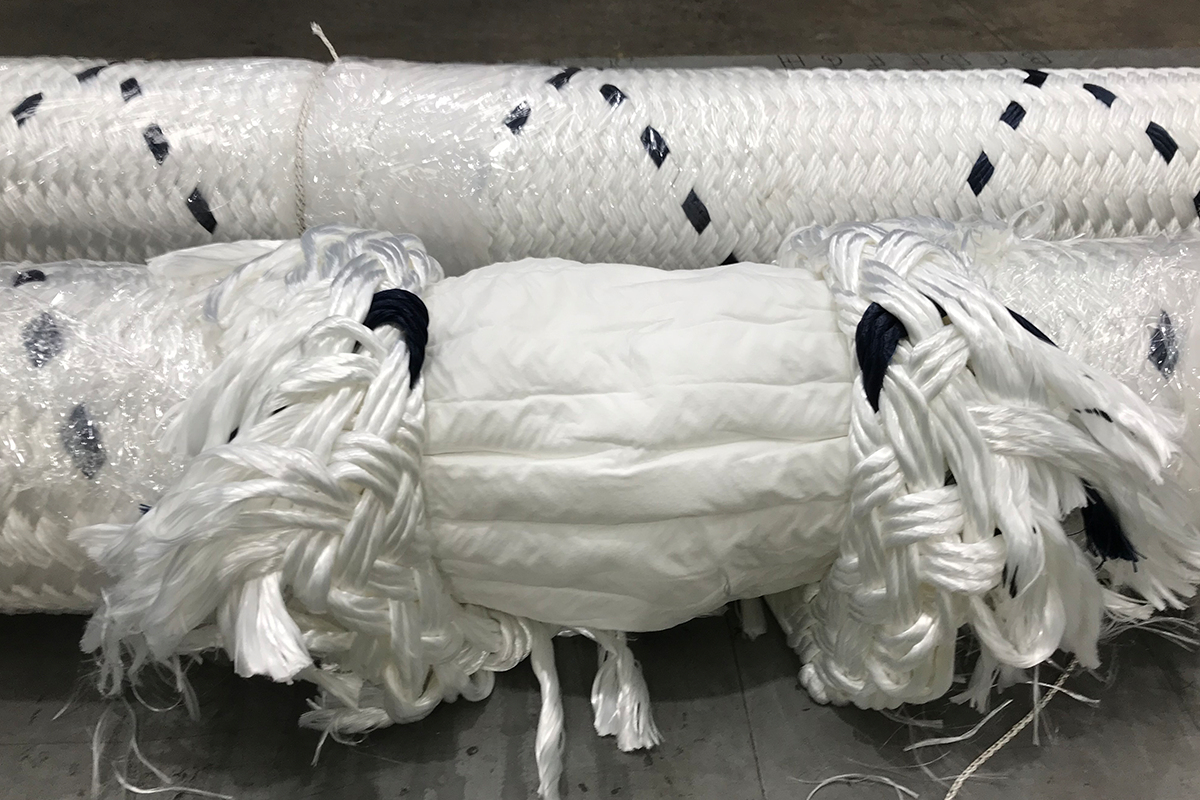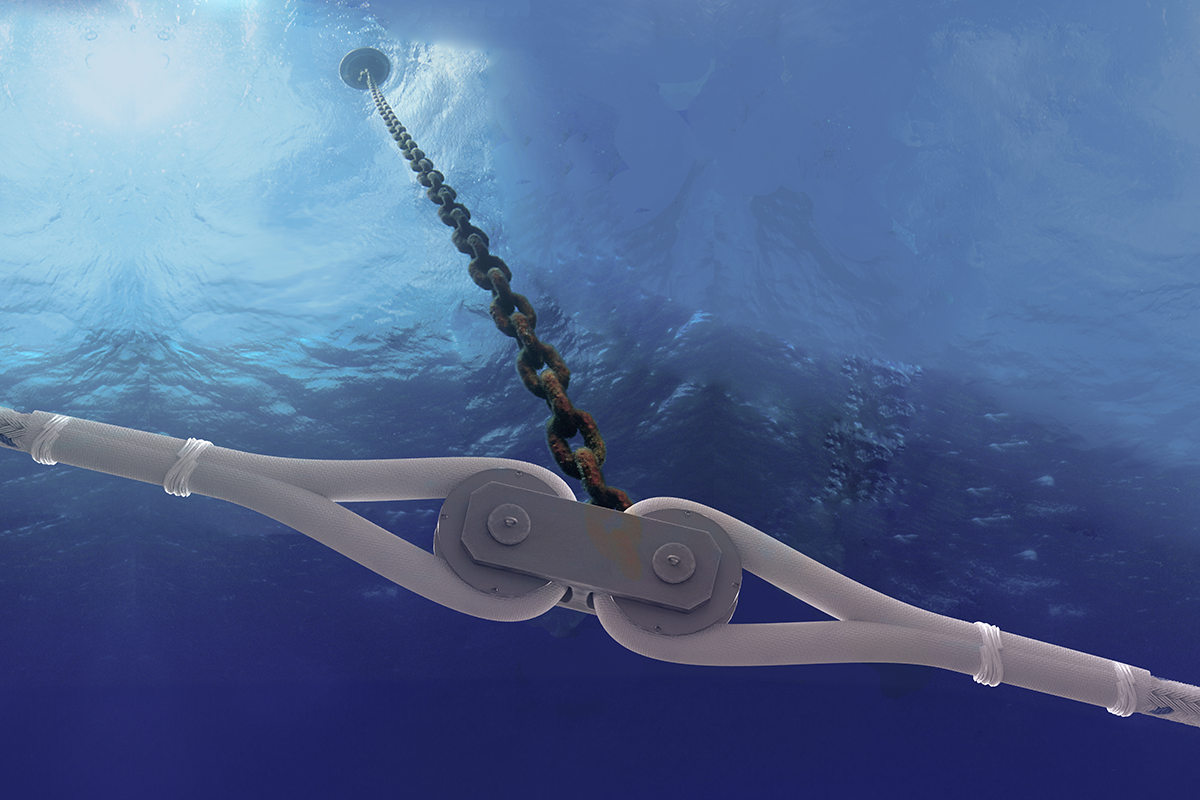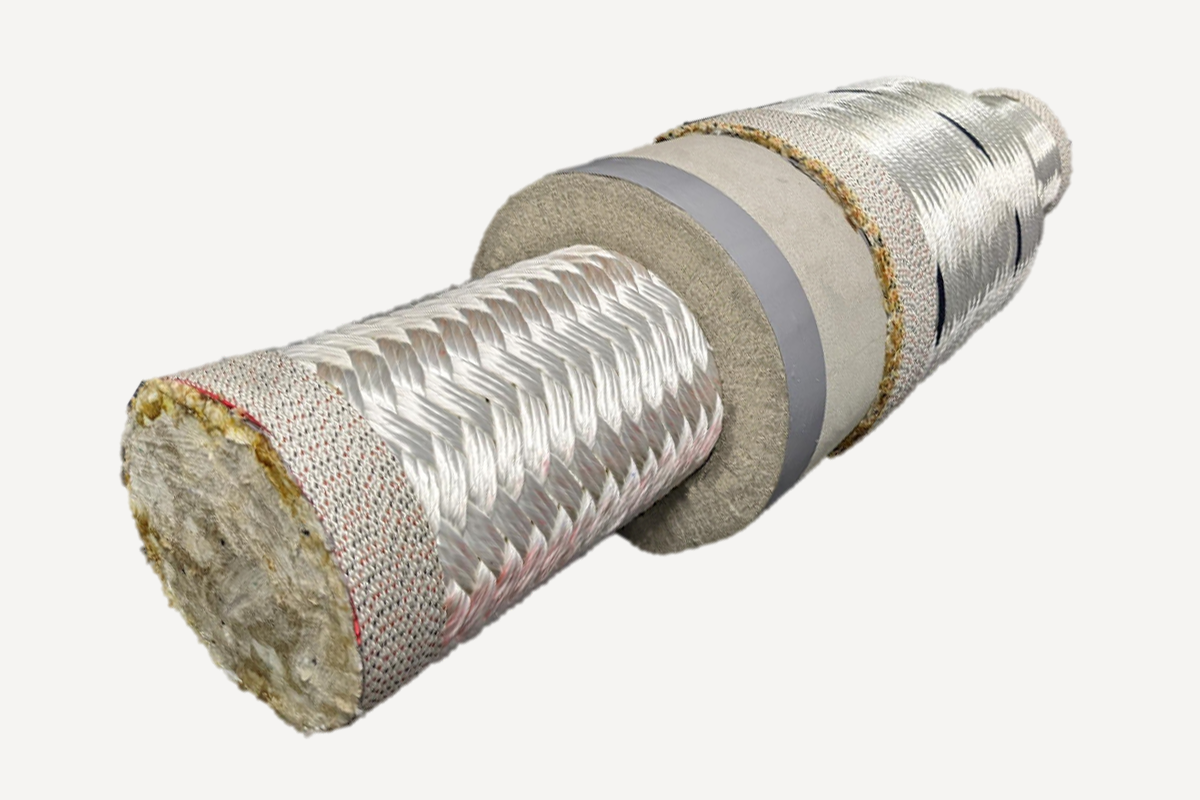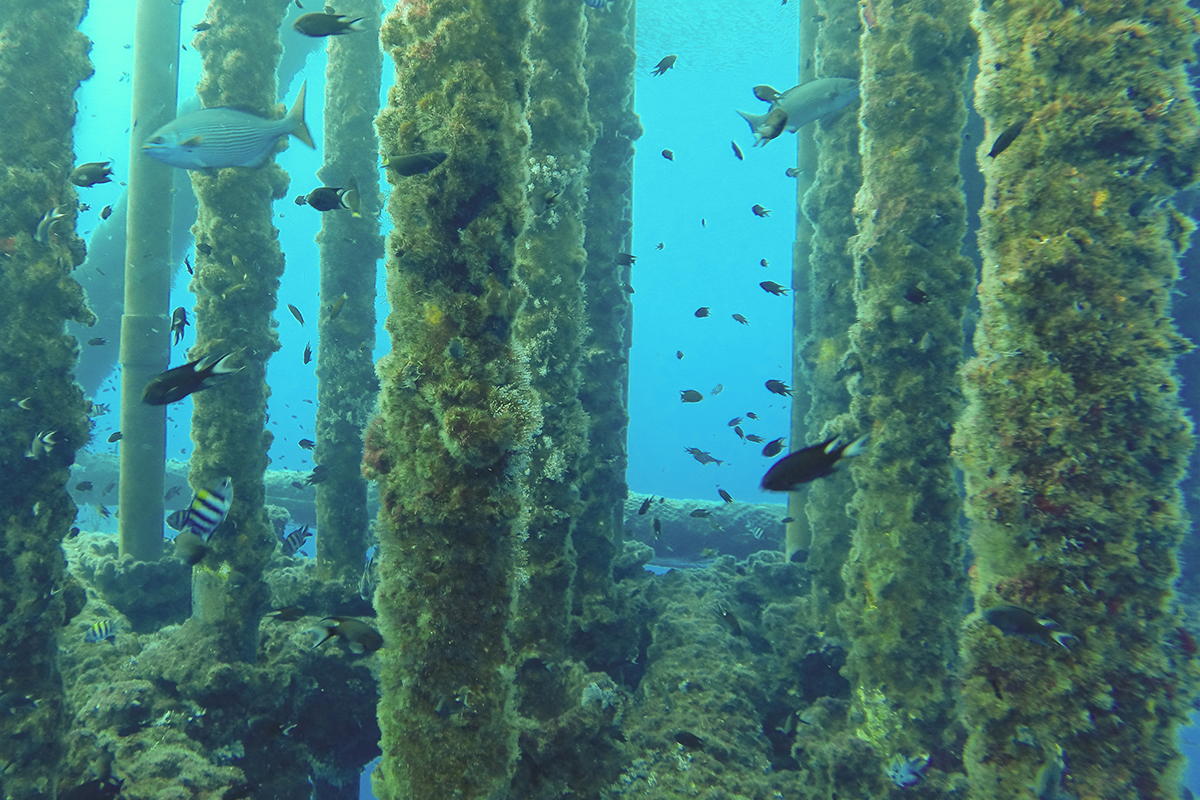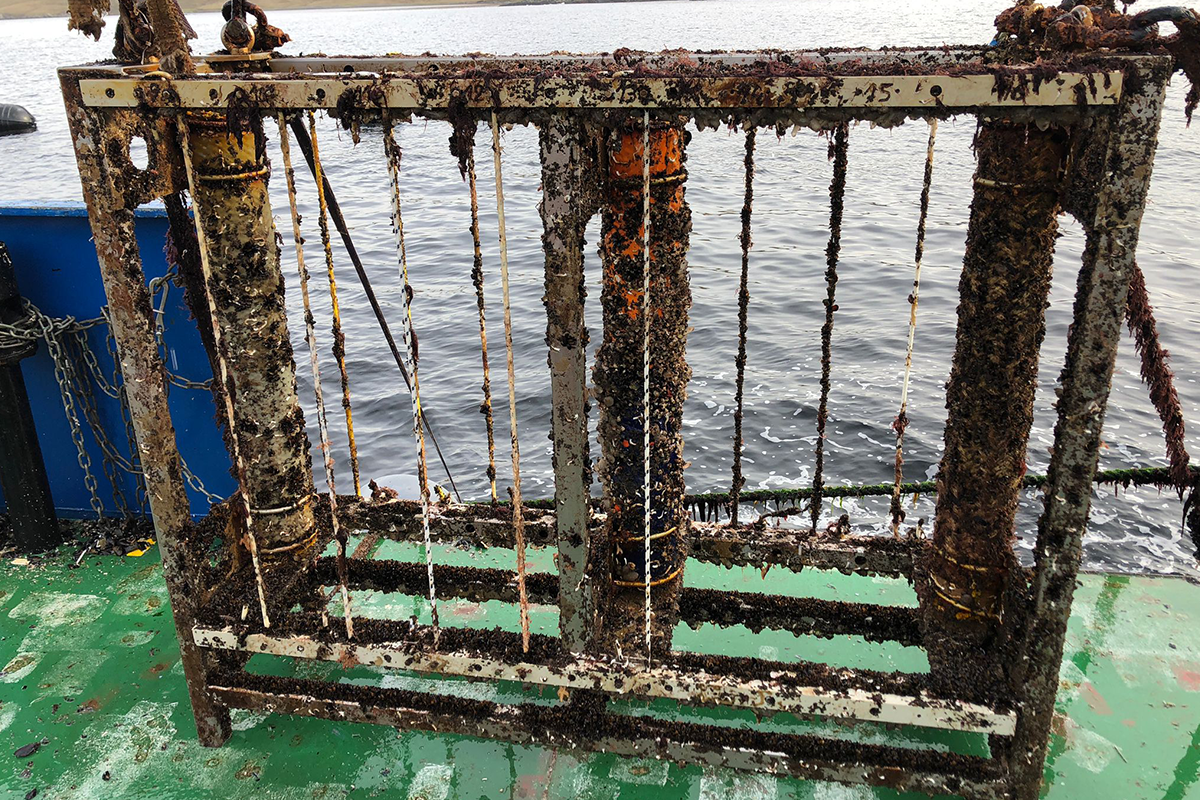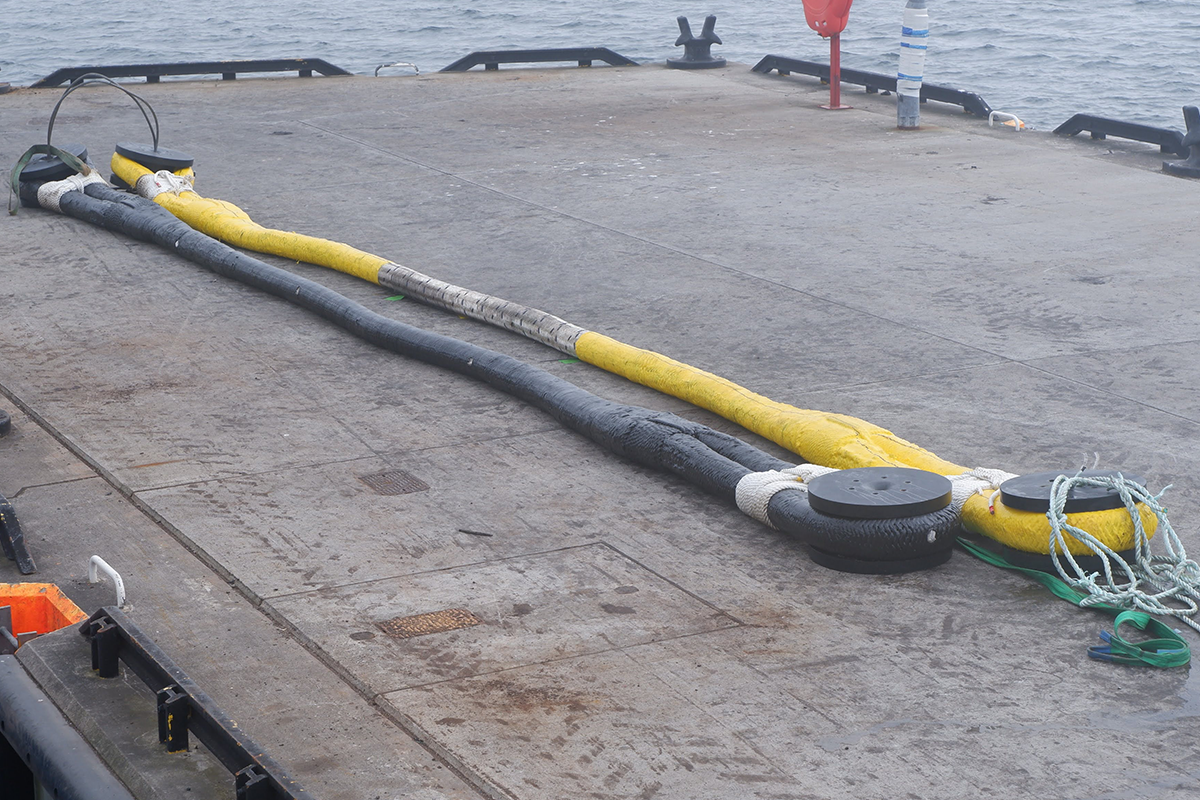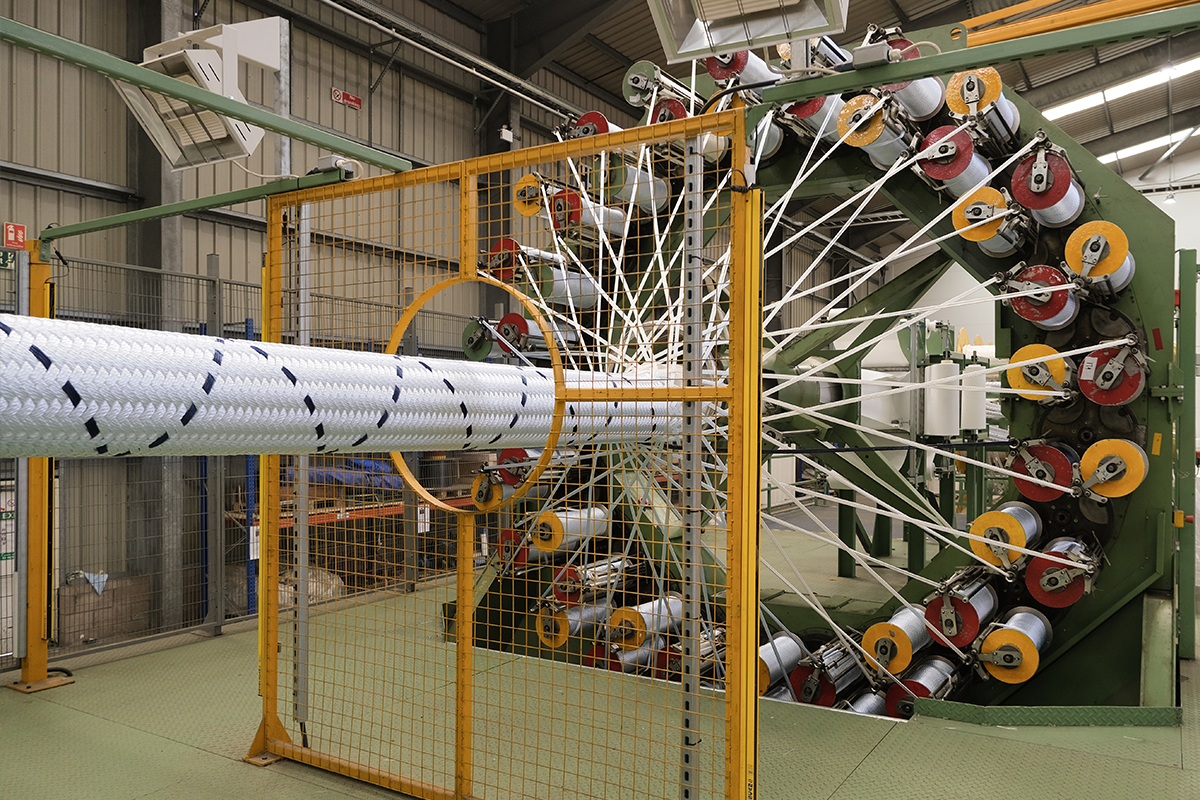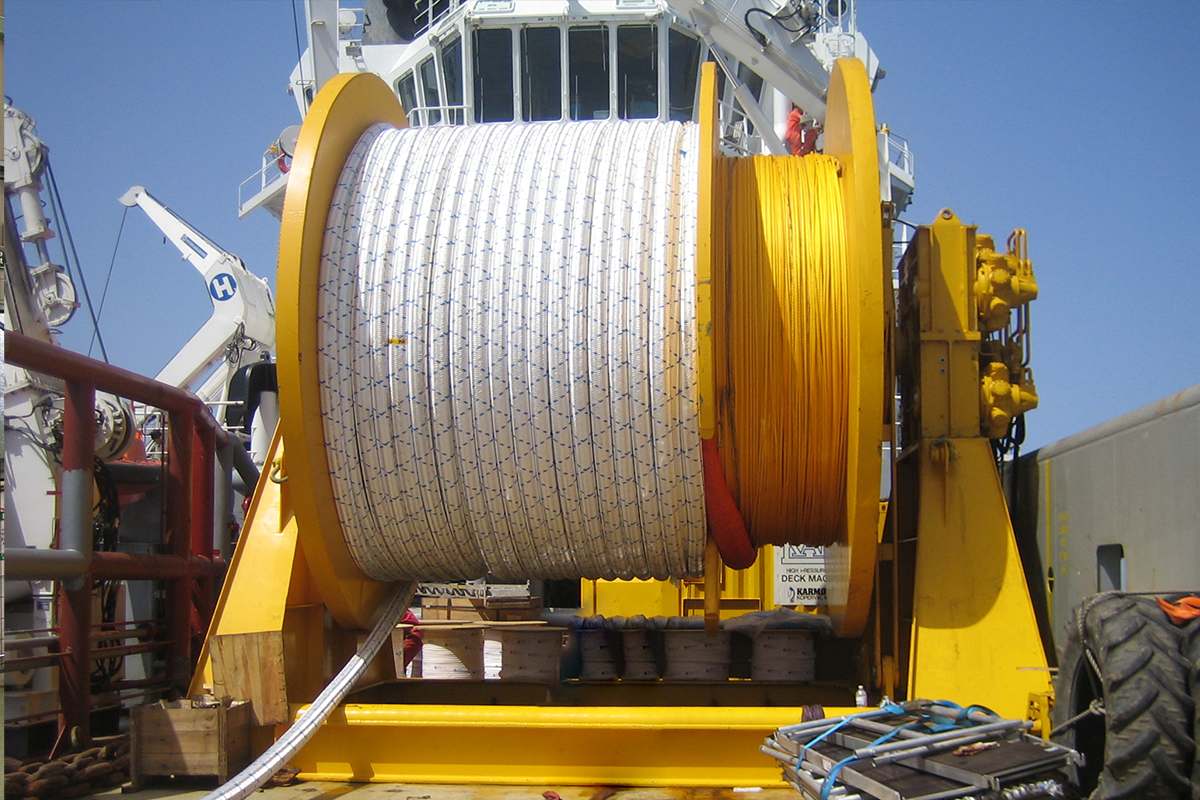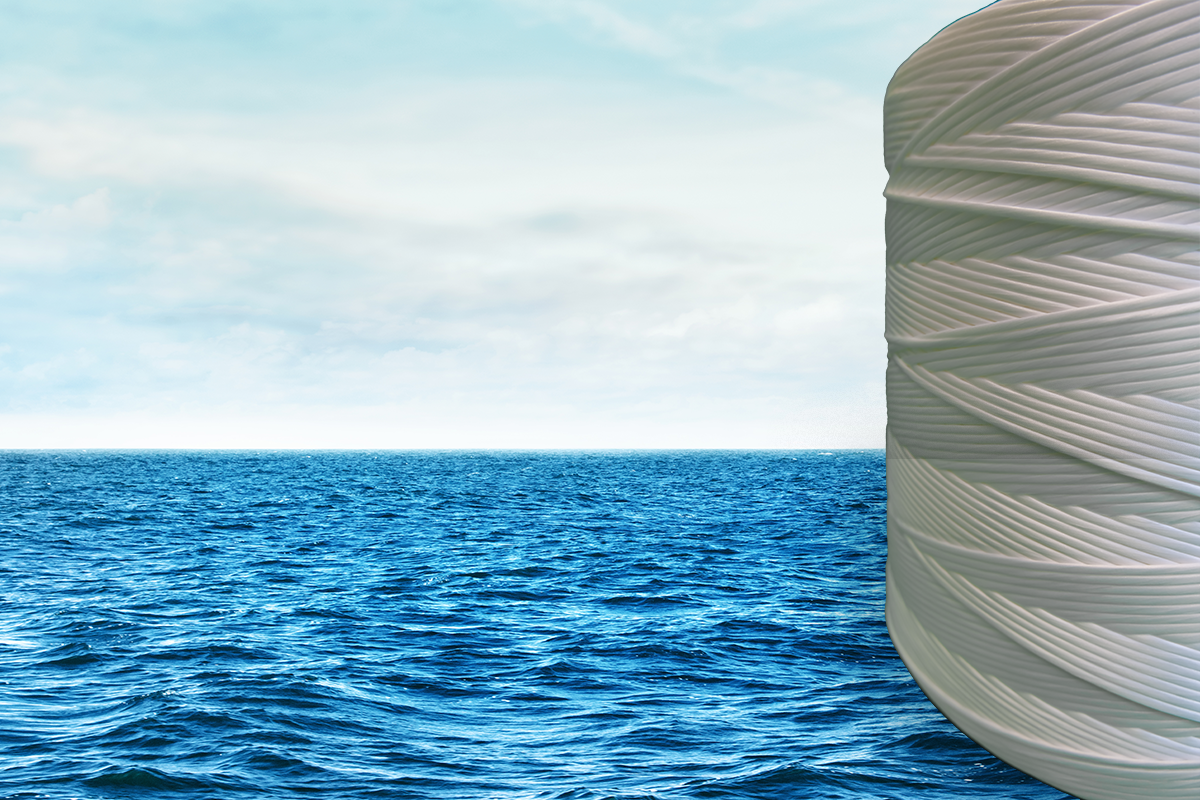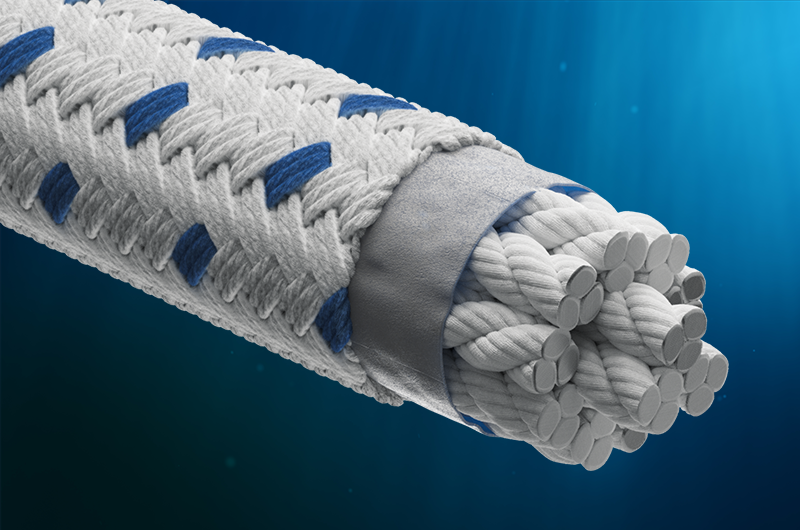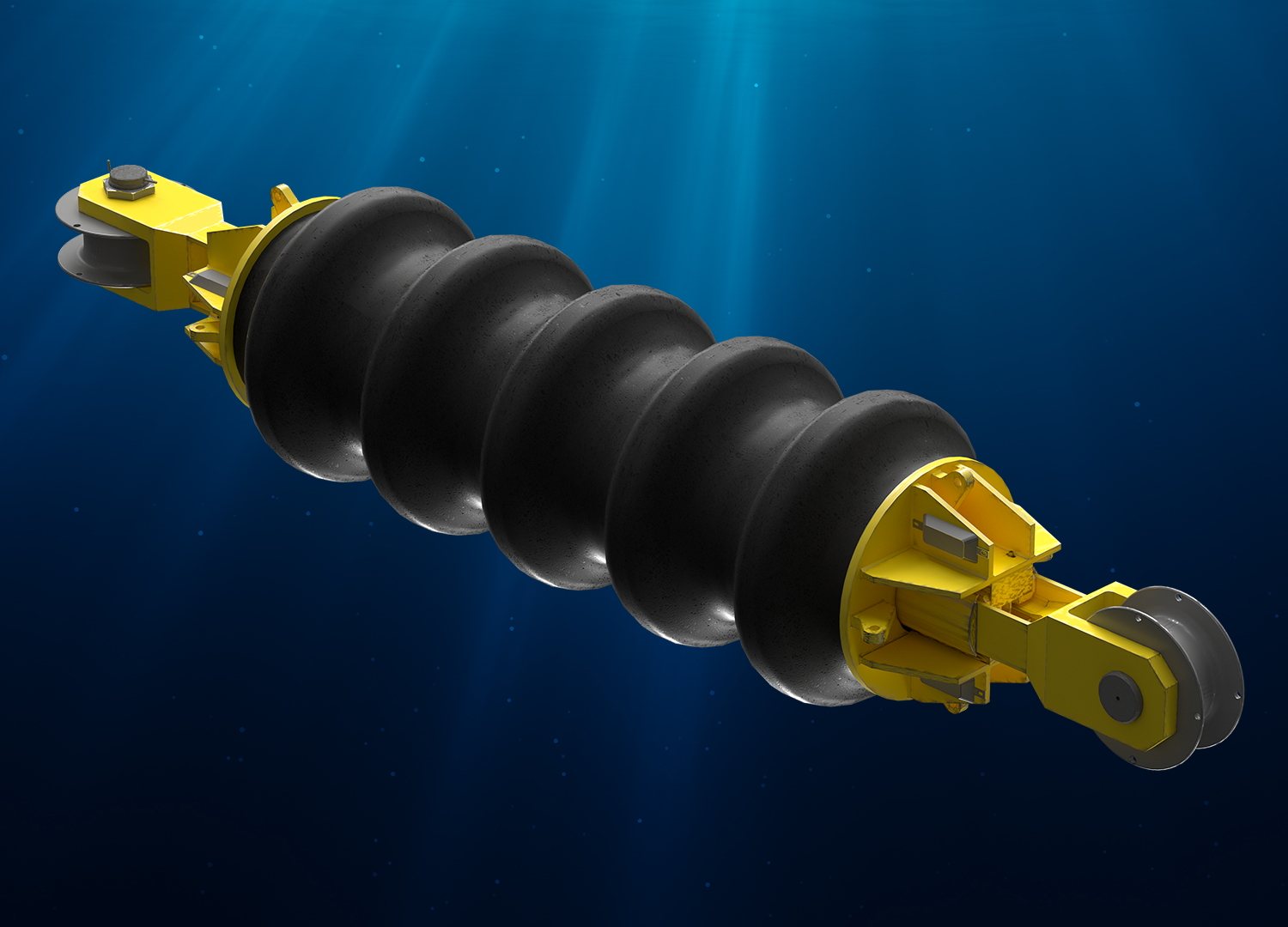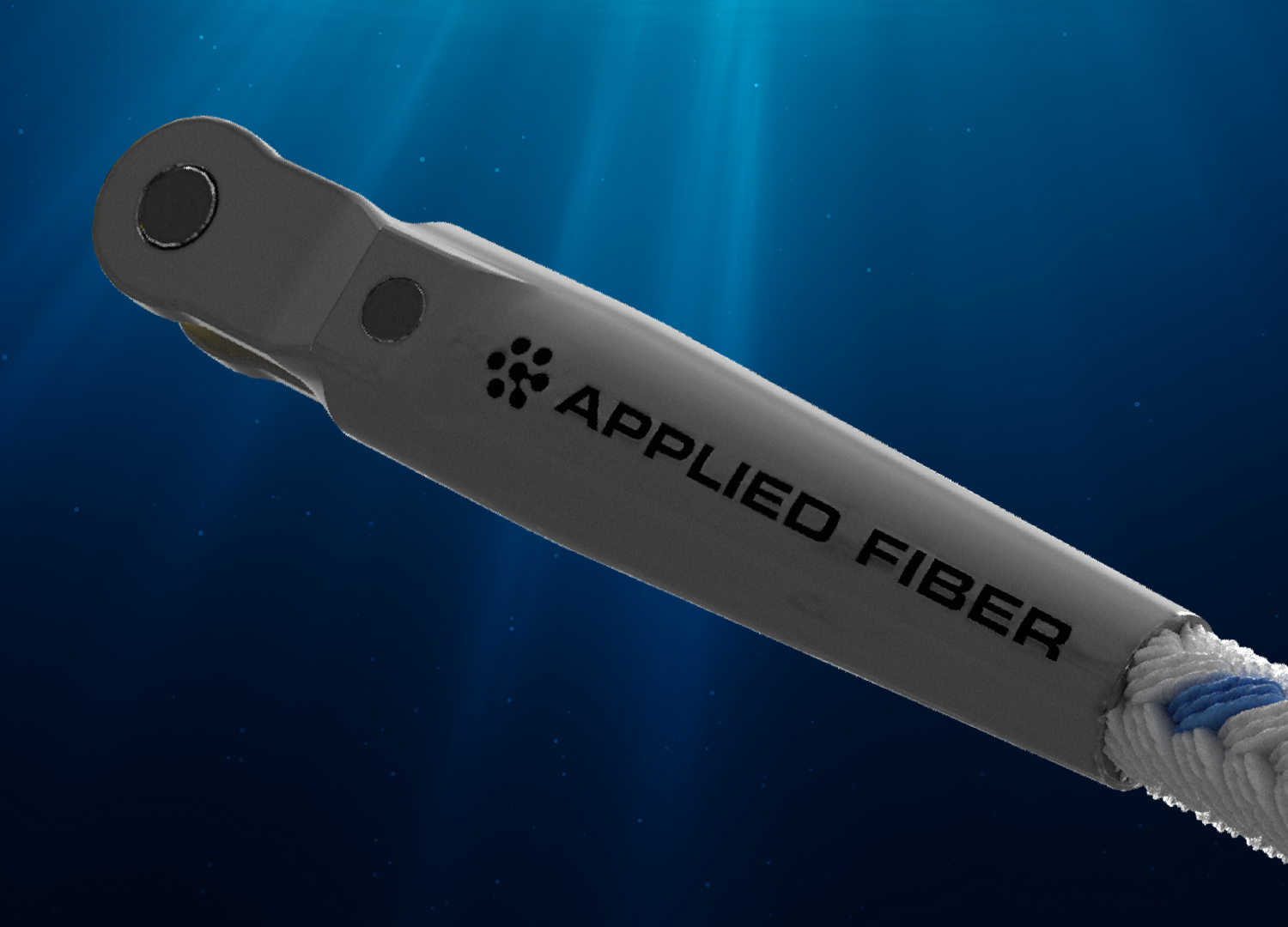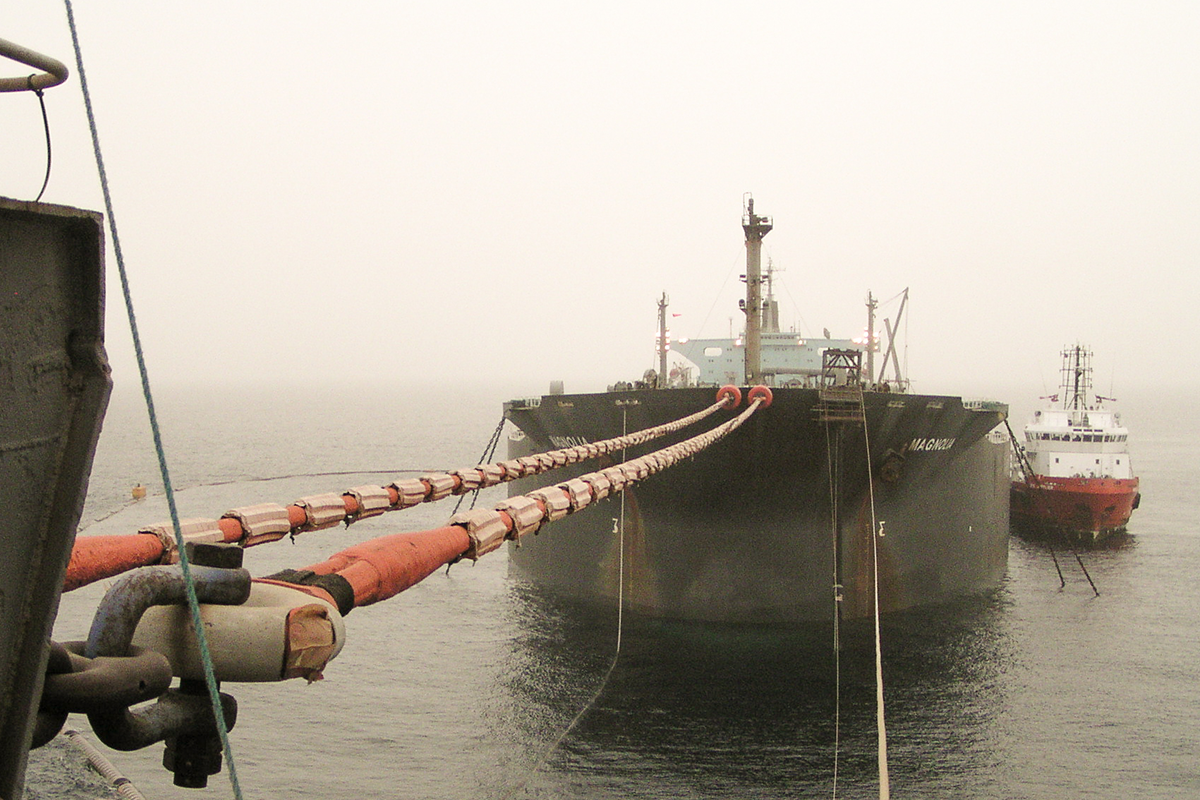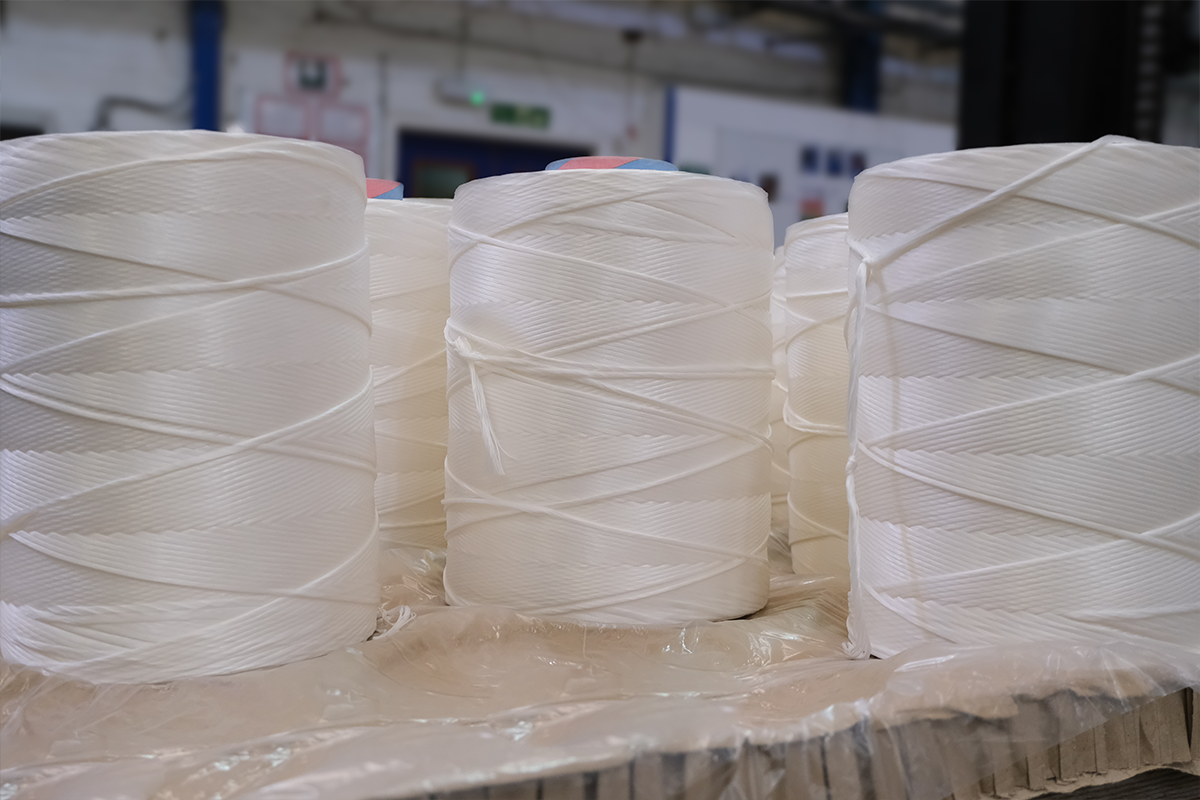Seabed Contact
Seabed contact has historically been a challenge for synthetic fibre ropes in mooring systems. Offshore standards, such as API RP 2SM and DNV-OS-E303, state that previously tensioned synthetic ropes should not come into contact with the seabed during operation. This can increase the likelihood of particle ingress, which can lead to a major reduction in rope life from internal abrasion.
A method of rope protection, is the use of a high performance particle filter layer, such as that found in Bekaert's MoorLine. The filter layer is wrapped around the load bearing sub-ropes and provides up to 5 micron particle ingress protection.
